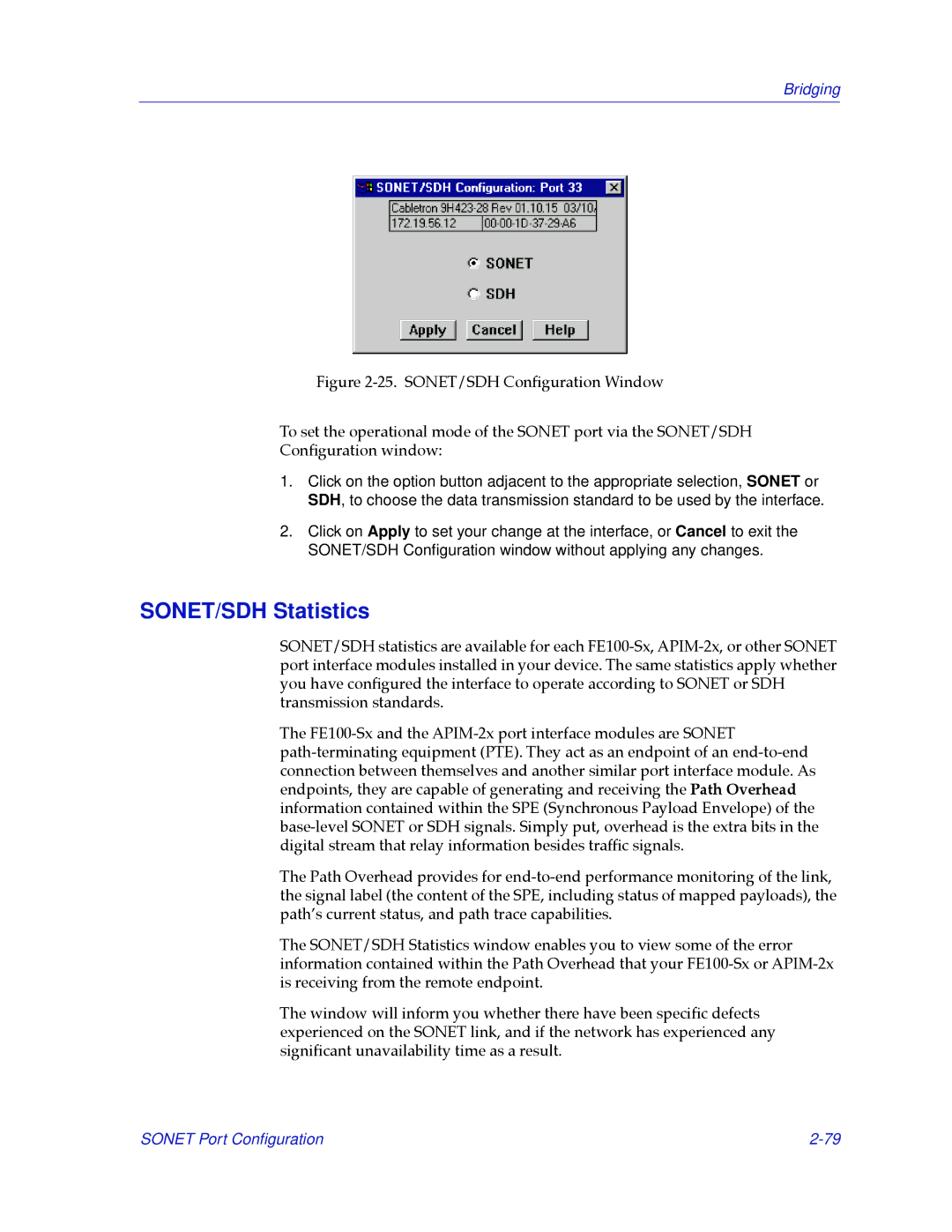
Bridging
Figure 2-25. SONET/SDH ConÞguration Window
To set the operational mode of the SONET port via the SONET/SDH
ConÞguration window:
1.Click on the option button adjacent to the appropriate selection, SONET or SDH, to choose the data transmission standard to be used by the interface.
2.Click on Apply to set your change at the interface, or Cancel to exit the SONET/SDH Configuration window without applying any changes.
SONET/SDH Statistics
SONET/SDH statistics are available for each
The
The Path Overhead provides for
The SONET/SDH Statistics window enables you to view some of the error information contained within the Path Overhead that your
The window will inform you whether there have been speciÞc defects experienced on the SONET link, and if the network has experienced any signiÞcant unavailability time as a result.
SONET Port Configuration |
